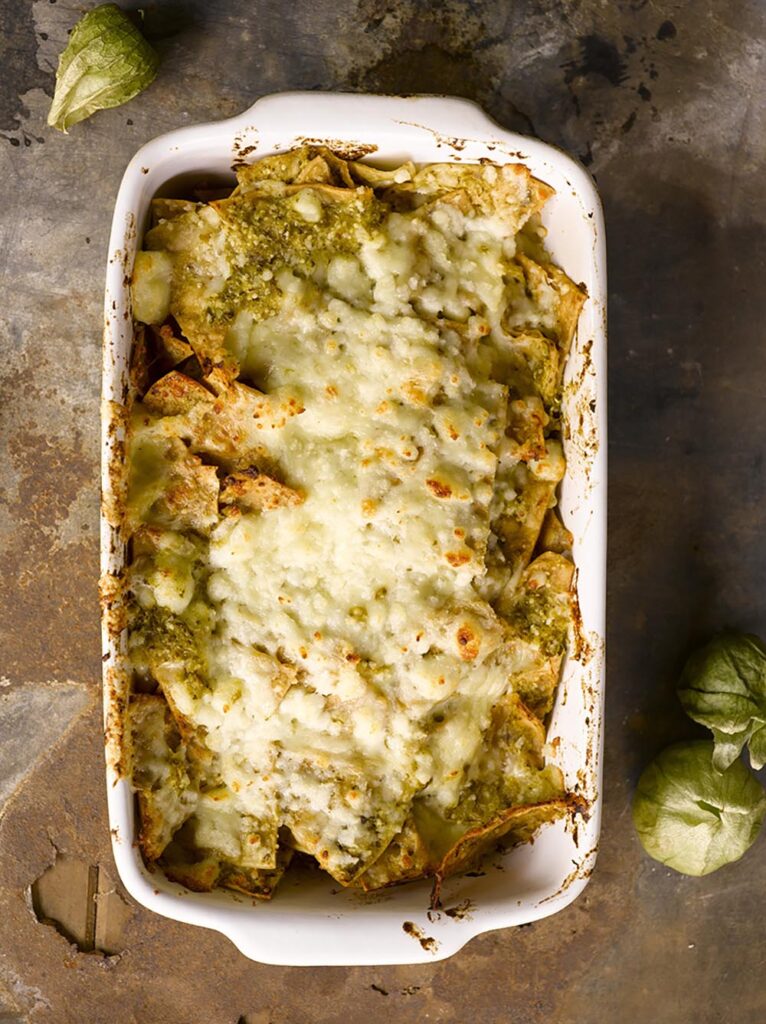By Deanne Moskowitz
In its March 2020 issue, featuring a cover story entitled “Taco Nation,” Bon Appétit magazine touts tacos as “quintessential to the American experience” and marvels at the country’s “unrelenting passion and hunger for quality tacos,” available coast to coast now, not only in Mexican population centers. But the appetite for Latin food isn’t limited to basic Mexican anymore, as confirmed by the National Restaurant Association’s 2020 What’s Hot Culinary Forecast, which lists South American among the top five global ethnic cuisines expected to appear on restaurant menus this year. As we learned when we asked caterers for contributions to this round-up of Latin dishes, more Central and South American cuisines and regional Mexican dishes are enlivening American menus, as our Latin population’s influence is felt.
Paul Larson, executive chef Blue Plate Catering in Chicago, calls Mexican “more popular than ever” and predicts that it has “staying power,” with its “depth in flavor, complex spices and comfort-evoking goodness.” As is the case across cuisines, he’s seeing a focus on fresh ingredients in Mexican and Latin American food now, citing the Veracruz region’s emphasis on local seafood, tropical fruits, tomatoes and avocados as a good example.
In Arizona, a major destination market, where the flavors of the Southwest are always popular with visiting clients and their attendees, M Culinary Concepts in Phoenix has been receiving more requests for expanded “Latin flavors,” which blend desert Southwest and classic Mexican with Central and South American cuisine, according to Michael Stavros, partner at M Culinary Concepts. “Our chefs also have been adding Caribbean favorites to menus,” he adds, “thoughtfully weaving island flavors and ingredients into their Latin offerings.” One sizzling example, Caribbean Paella (a combination of Bomba rice, conch, scallops, red snapper, mackerel, linguica, coconut milk, Jamaican Scotch bonnet chile pepper sauce and saffron) is cooked on-site in a jaw-dropping 3.5-foot paella pan on a 3-foot-diameter gas-fired ring “burner.”

Not to be underestimated is the impact of Latin American kitchen staff on the Latin upswing, as Lisa Dupar, chef/owner of Lisa Dupar Catering in Seattle, verifies, explaining the excitement that “diversity in a kitchen brigade” creates as she and her team “exchange techniques, recipes and traditions.” Dupar, who has a “deep connection” to Mexico and Central and South America, having been born in Mexico and living there as a little girl, employs chefs from the Yucatán, Michoacán, Chihuahua and Mexico City, and reports that cooks from Bolivia, Ecuador and Venezuela have influenced her kitchen for years.
Not surprisingly, Florida’s Miami Grill Catering in Hialeah is a stronghold for Latin cuisine. Born and raised in Miami-Dade County, Chef/Owner/President Antonio Morejon is the son of Cuban immigrants; the company’s chef and sous chef are Peruvian and Cuban-American, respectively; and Morejon’s wife, Barbara, who is involved in operations, emigrated from Venezuela when she was 3.
Of course, the millennial love for newness and bold flavors, along with the dietary adaptability of Latin food, are helping to beat the drum. Keen on responding to client requests for plant-based proteins and dairy-free alternatives, Blue Plate sometimes substitutes nopales for animal proteins in tacos and tamales, and recently tested the use of oat milk in horchatas. Laurine Wickett, chef/owner of Left Coast Catering in San Francisco, finds Latin fare popular across the board, but observes that it is “ideal” for satisfying clients following gluten-free diets.
“So many flavors—and something for everyone!” proclaims Holly Tate of Holly Tate Fine Catering in Winston-Salem, N.C., of the taco bars that are so popular for millennial wedding receptions of all sizes there, especially those that fall around Cinco de Mayo, which often include an entire Mexican meal. Certainly not limited to those of Mexican heritage, these so-called “anti-chicken-buffet clients” are usually well traveled, love Mexican food, appreciate the interactive feel of taco bars and want something unique.
Argentinean, Cuban and Venezuelan are among the Latin variations already entrenched here, but newcomers are on the way. In its 2019 What’s Hot report, the National Restaurant Association identified Peruvian as up-and-coming, ranking it third of the five top choices in the Global Flavors category, and caterers we contacted agree.
Home to a few restaurants ranked among the top 50 worldwide, “Peru is on fire right now,” according to Dupar, who points to a “culinary diversity” there, rivaling that of the USA. “Coastal Peru, the Andes and the Amazon basin, each provide uniquely diverse ingredients,” she points out, among them the ají amarillo pepper, rocoto pepper, over 3,750 types of potatoes, Inca corn, quinoa and such tropical fruits as lucuma. Unfortunately, most will never be seen here, forcing Dupar to experiment with local ingredients to recreate the traditional Peruvian recipes that inspire the company now. Among Peruvian influences on the menu are Spring Vegetable Escabeche and Chipotle Shrimp Ceviche.
Wickett, who has observed Peruvian food gaining popularity and Peruvian chefs gaining notoriety since the 1990s, loves “the Japanese influence on the cuisine, the clean but flavorful ceviches” and the ají amarillo peppers, which she claims she can “put on anything.” Looking ahead, she is intrigued with sopes and arepas from Colombia and Venezuela, too, as departures from typical tacos.
Peruvian influence pops up on the menu at M Culinary Concepts, too. For example, Pulpo Chancón (sous vide Peruvian octopus) and Peruvian queso fresco are components of the Latin-Inspired Antipasto, comprising multinational cured meats, seafood and cheeses.

If you’d like to add some Latin kick to your menus, draw inspiration from these caterers’ favorite Latin dishes:
Striving to “elevate the Mexican food trend,” Blue Plate Catering’s Paul Larson invented this twist on a Mexican staple—the Unwrapped Tamale Action Station. An interactive, fun conversation piece—with chefs on hand to customize flavors and heat levels with salsas and toppings—it has been a “favorite choice” for formal and informal events. After deciding to eliminate the wrapper for preparation and service, in order to reduce waste and facilitate guest enjoyment, Larson tested flexi-molds and the use of a steam oven to ensure moistness and consistency in the masa during cooking and reheating, then experimented throughout the year with masa flavorings to express seasonal and event themes. By incorporating different flexi-mold shapes as well as coloring the masa with spices, he achieved a delightfully playful presentation. Of course, the tamales are gluten-free, and vegetarian and vegan options are available.

Lisa Dupar of Lisa Dupar Catering heard the story of Alfajor de Maizena, a traditional South American sandwich cookie, from a Uruguayan chef who sat next to her on an international flight. Leaving the plane without a recipe, she developed her own. Born in Mexico City but raised in Atlanta, Dupar substituted Kentucky bourbon for the traditional pisco to make it “ours,” as she explains. The cookie is served seasonally as part of a finger desserts catering selection, and last year was included in an international holiday cookie plate at Dupar’s Pomegranate Bistro & Bar. Made from cornstarch, all-purpose flour, baking powder, salt, powdered sugar and vanilla extract, the cookie dough is rolled to 1/8-inch thickness, cut into 2.5-inch discs and baked on a lightly floured baking sheet at 350ºF for 12-15 minutes until golden. House-made dulce de leche, flavored with bourbon and orange peel and cooled, is spread on half the discs and covered with the other half, before rolling the edges of the sandwiches in shredded coconut and dusting the tops with powdered sugar.
When Dupar opened her Pomegranate Bistro for brunch, she added Chilaquiles with scrambled eggs, a Mexican specialty, to the menu, having noticed her line cooks always eating that “yummy-looking” breakfast before the café opened for guests. Without the eggs, the fried corn tortilla strips covered with queso fresco and chile verde make a “fun Super Bowl party plate,” she notes. Doused liberally with tomatillo salsa and topped with queso fresco, tortilla chips are baked until the cheese melts, before they are slid onto a plate and finished with lime sour cream. They may be served with scrambled eggs, if desired, and are garnished with cilantro leaves and arugula, which Dupar prefers to the fresh epazote that her cooks like, because it is easier to find and the fresh, slight bitterness of the greens adds “great balance.” For the tomatillo salsa, jalapeño peppers and tomatillos, with their husks removed, are covered with water, boiled for 10 minutes and then strained. A 1/4-cup of reserved liquid is added to a blender with the jalapeños, tomatillos, onion, cilantro, garlic, salt and pepper, blended until smooth and refrigerated until needed.

Making a stunning plated presentation at Left Coast Catering is Chicken Mole, Pickled Red Onions, Cotija and Plantain Chips. It’s the perfect addition to a Latin-inspired menu and sensational for spicing up a selection of small plates, says Laurine Wickett, adding that the mole also works well atop a tostada for a passed appetizer garnished with the pickled onions and cheese. Wickett came up with the mole concept one Thanksgiving, after catering many pre-holiday lunches and dinners for clients. Tired of turkey and the trimmings, she started a turkey with mole tradition, with help from her husband Henry. Made with toasted chiles, almonds, tortillas, tomatillos, sesame seeds, spices, dark chocolate and raisins, according to the classic recipe, the sauce is strained and allowed to sit for a day to unify the flavors, before being used to dress up braised chicken thighs for this dish.

What could be better than potato fries? The Venezuelan Yucca Fries at M Culinary Concepts in Phoenix! A butler-passed hors d’oeuvre, the lightly salted freshly fried or oven-baked “sticks” of yucca (aka cassava) are piled into paper cones or small bowls and offered with Guasacaca Dipping Sauce, an avocado salsa. Crispy outside and creamy soft within, they are gluten-free and vegetarian like potato fries but paleo-friendly, too, points out Michael Stavros.

Absolute theater, Tacos al Pastor are wonderful for showcasing at events, especially at smaller outdoor wedding receptions, according to Holly Tate of Holly Tate Fine Catering, where street tacos are extremely popular with millennials lately. Guests are captivated as they watch the pineapple and pork being grilled, the salsa produced, and the ingredients being piled into grilled tortillas, accompanied by a lime wedge. The process begins eight hours or up to three days ahead, by marinating slices of boneless pork shoulder in a mixture of achiote paste, guajillo powder, dried oregano, cumin, chile powder, salt, pepper, white vinegar and pineapple juice. At the event, the slices are grilled over low heat until the marinade dries and begins to caramelize and char, and after resting, are cut against the grain into 1/4-inch strips. Before the pork is cooked, the salsa is made by charring 1/2-inch-thick fresh pineapple rings over medium-high heat, turning once, finely chopping them, and combining the result with jalapeños, cilantro, lime juice, onion, and salt and pepper.
Among the impressive assortment of Latin menus offered at Miami Grill Catering (including Brazilian rodizio, Cuban and Mexican), is La Parrillada, an expansive buffet with an Argentinean steakhouse vibe. Emulating a country that prides itself on its savory beef and excellent wine, the menu stars the grilled beef assortment known as Churrasco, but also includes grilled chimichurri chicken; sausages such as chorizo Argentino, morcilla, molleja and spiral sausages (representing Argentina’s Italian influence), onions and peppers; and grilled vegetables, among other items. Seasoned only with salt, which is done on-site (just as it is in Argentina), USDA-grade-A flap meat or skirt steak is cooked on a gas grill or over coal where permitted, cut up and set into a chafing dish, and drizzled with house-made chimichurri. For an upcharge, it is presented as a carving station.
Citron Ginger Ceviche is considered “essential” to Miami Grill Catering’s Caribbean menu. The hors d’oeuvre is prepared with fresh swordfish, lime juice, cilantro, onion and garlic, and served in a shot glass.


For More Information
Blue Plate Catering
• blueplatechicago.com
Holly Tate Fine Catering
• hollytatefinecatering.com
Left Coast Catering
• leftcoastcatering.com
Lisa Dupar Catering
• lisaduparcatering.com
M Culinary Concepts
• mculinary.com
Miami Grill Catering
• miamigrillcatering.com










